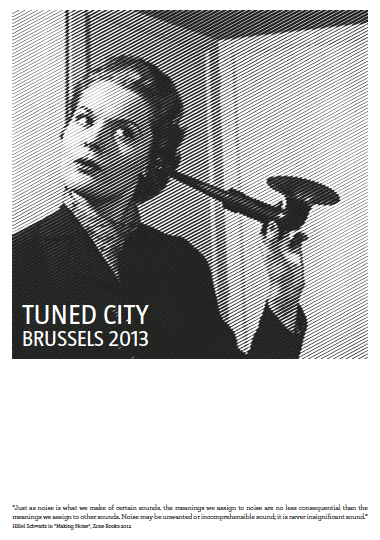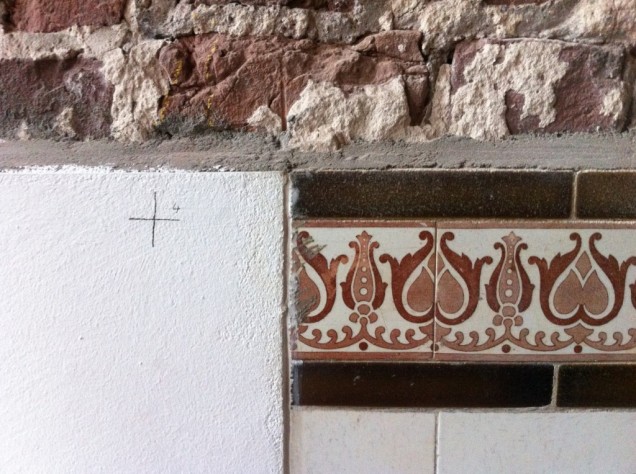
COLLABORATIONS
Art schools
Working with Brussels art schools has been particularly important in the context of Tuned City Brussels. Sint Lucas Architectuur (“Resonances of a blind spot”), Erasmus Hogeschool RITS/Radio (sound atelier), Sint Lukas Transmedia (“Inner/Outer”) and La Cambre (ENSAV) option Espace Urbain (“Inouïr Space Exploration”) worked in parallel threads on semester projects in the first half of 2013. Four public workshops in relation to the festival topics were led by external tutors.
Q-O2 hosted two international workshop groups from the Masters of Artistic Research program (MAR) from the Royal Academy of Art (KABK), The Hague, Netherlands (led by Raviv Ganchrow and Gabriel Paiuk) and The Sound Art Class from The Braunschweig University of Art (HBK), Germany (led by Carsten Stabenow) working on the topics ‘Modes of Listening’ and ‘Interpretation of Noise’.
Results of the semester projects and the workshops will be shown at Galerie Rivoli.
Student presentations at Galerie Rivoli >>> map
June 27, 14:00 > 18:00h, June 29, 12:00 > 19:00h
–
Citizenne
Citizenne is building an open and learning Brussels in collaboration with other organisations, groups and communities. A place where residents feel connected and involved. Citizenne organises, among others, courses, debates, workshops and trips, very much with the locals and their daily lives in mind. Their activities are there for them and by them. Citizenne creates conditions and opportunities for locals to carry out their own projects and do their own thing. During Tuned City Brussels, Citizenne invites you to come and explore the festival in group, with a word of explanation from the artists and organisers along the way.
Group Visit, June 29, 13:30 > 17:00
Tickets: €5 (reduction: €2,5). Info and reservations: 02/203 08 00 – info@citizenne.be – www.citizenne.be
–
BESSST (Brussels, silence and tradition)
bessst is a community of practice of people who want to make the quiet side of Brussels accessible to as many residents and visitors as possible. We want to bring back wonder, pause and simplicity in the daily grind. bessst strives to raise the quality of life of city dwellers and all those who visit Brussels by showing them the way towards quiet places and practices. And by offering projects that purposefully create space to enjoy peace and quiet in the city. www.bessst.be
–
BNA-BBOT
BNA-BBOT encourages a large number of people to record their conversations about life in Brussels. The objective is to keep these sound recordings in a useful sound library with a view to distributing these in the broadest sense possible. BNA-BBOT has made technical recording equipment available for this purpose, receives and collects testimonies that are subsequently archived and organised in a trilingual database. This is available online from www.bna-bbot.be and currently contains more than 1,800 testimonies that date from 1999 to date.
–
PRE-EVENTS
Carsten Stabenow, founder of Tuned City, will briefly introduce the project and will give an outlook on the plans for Brussels. Dr. Lamberto Tronchin, Professor in Environmental Physics from the University of Bologna, recognised internationally as a leading authority on the subject of sound and acoustics and a pianist himself, will open the evening with a lecture about one of the most inspiring thinkers of sound and space in the 17th century, Athanasius Kircher. The Belgian architect and urban planner Luc Deleu, questions with his utopian projects the role of architecture and urbanism in the modern age, their position and duty in a global society and opens with his visions new perspectives of thinking architecture. Ariane Wilson, architect and art historian at the RWTH Aachen focussed her research on the role of sound in city and architecture and will give an overview about the current developments in that field.
A performance by Justin Bennett, who focusses in his work on the relationship between architecture and sound, will play with the elasticity of the concept of ‘space’.
–
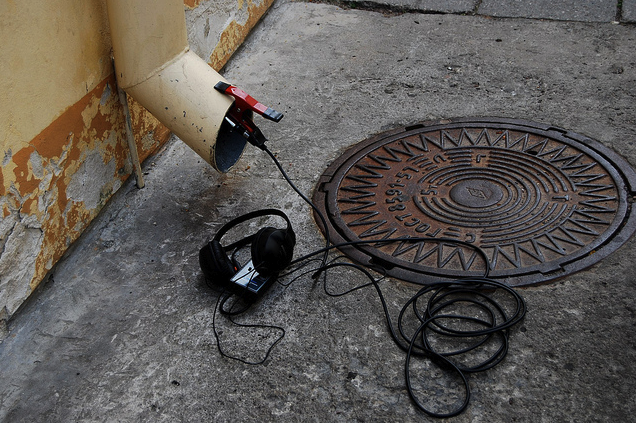
photo © John Grzinich
Tuned City at Artefact
20/02/2013 – 19:00 + 20:30 – STUK – Leuven
During Artefact Festival 2013, Felicity Ford (UK), Peter Cusack (UK) and Pascal Amphoux (CRESSON) (FR) present their different views on the relation between city and sound, preceded by sound walks through Leuven. Two walks start at STUK’s ticket office at 19:00, the lectures and presentations start at 20:30 in STUK Labozaal.
http://www.artefact-festival.be/2013/programma/detail/60593
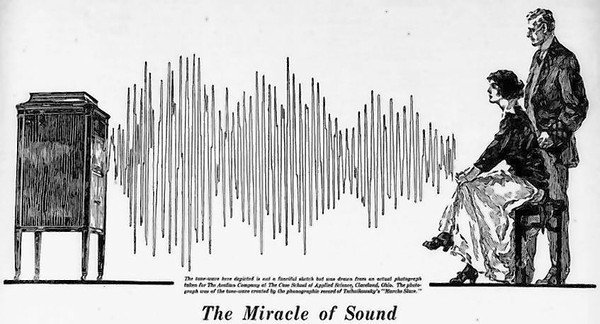
Ligna (D), Christina Kubisch (D), Felicity Ford (UK) + Valeria Merlini (IT/D), Roberta Gigante (BE), Nikolaus Gansterer (AT), Christoph Fink (BE), Udo Noll (D) and Will Schrimshaw (UK).
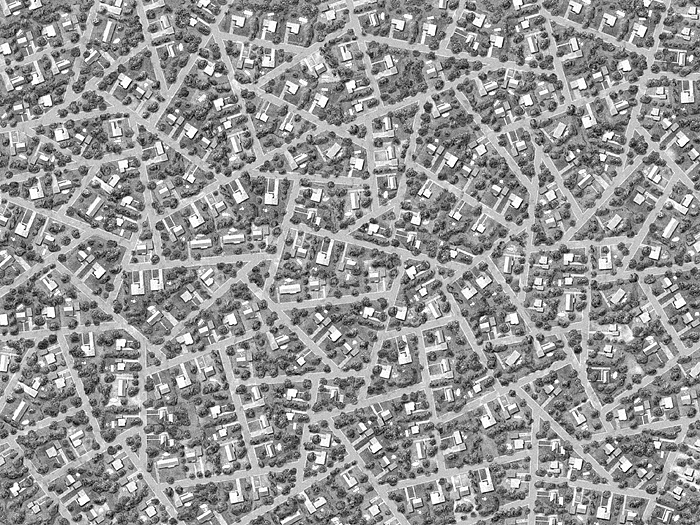
Tuned City Brussels: workshops
A collaborative workshop week together with Sint Lucas Architectuur, Erasmus Hogeschool RITS/Radio, Sint Lukas Transmedia, a.pass, okno and La Cambre (ENSAV) option Espace Urbain and l’Escaut.
Closing presentations on march 28th, Q-O2, Koomijnenkaai 30-34, 1080 Brussels, 18:00.
–
01] Listening to Brussels from within and without
Felicity Ford (UK) + Valeria Merlini (IT/D)
25 – 28 March 2013, Kaaistudios
Felicity Ford and Valeria Merlini will work with you to explore the sonorities of the city. Together we will create a radio show to give listeners who do not know the city some sense of its aural character. These workshops will lay a foundation for Tuned City in June, celebrating the sonic identity of Brussels in advance of the festival. This first workshop series in March will lead to the production of a radio show for framework:afield.
The theme for this radio show will be “Listening to Brussels from within and without”, as we will focus on both interior and exterior spaces; individual vs. collective experiences; and the differences between how residents and visitors hear a city.
–
02] Electromagnetic movements
Christina Kubisch (D)
25 – 28 March 2013, okno
Participants get special designed wireles headphones , which are able to make audible the otherwise hidden electromagnetic fields of the city. These sound are of great variety: rhythmic structures, hums, thick layers of multiphonics etc. The participants make guided and/or individual city walks and explore the fields. They make a map of their itineraries and discuss the sounds and the places they come from. Participants should develop together with me a practical work about these experiences. This can be a visual or acoustic work. The result is a public presentation in a public space which is based on the electromagnetic mapping of Bruxelles.
–
03] slow listening – speed interpretation models
Nikolaus Gansterer (AT), Mira Sanders (BE), Annelies De Smet (BE), Leslie Burm (BE)
25 – 27 March 2013, Sint-Lucas Architectuur
‘slow listening – speed interpretation models’ proposes a modelling workshop in order to train specific ways of listening and gain awareness of multiple ways of designing. During the workshop we make personal interpretation models that can be interpreted by others endlessly. The approach is based on the work of John Cage. His oeuvre offers us slow listening and concrete mechanisms for (re)interpretation. The whole set is a playground in-between (urban) space and sound. The goal is to imagine modelled and concrete translations of this approach.
–
04] The Tone of Prime Unity
Will Schrimshaw (UK)
25 – 28 March 2013, Sint-Lukas Transmedia
This workshop explores the subliminal influence of acoustic space upon citizens. Participants will explore the city as a material practice of ideology. Forming a roving pedestrian laboratory, through the use and construction of open tools and methodologies, the frequencies at which the city insinuates itself into the mind will be charted and mapped. This workshop will focus specifically upon the existence of an international “tone of prime unity” posited by R. Murray Schafer: ”In the Indian anahata and in the Western Music of the Spheres, man has constantly sought some prime unity, some central sound against which all other vibrations may be measured […] It is, however, only in the electronic age that international tonal centers have been achieved; in countries operating on an alternating current of 60 cycles, it is this sound which now provides the resonant frequency, for it will be heard (together with its harmonics) in the operation of all electrical devices from lights and amplifers and generators.” (1994, 98-9)
Schafer’s tone of prime unity describes the determination of a collective sonic unconscious through the acoustical impressions of electricity. Schafer optimistically interprets this as the foundation of a community of listening subjects bound by fundamentals established by the `electric revolution’ (Schafer: 1994, 89-99). This workshop begins with a more ambiguous interpretation of Schafer’s discovery of the “tone of prime unity”, understanding it to be an example of the influential capacity of acoustic space, its ability to subliminally inform and individuate.
This workshop will make use of the following methods: Pedestrian Research: A mongrel, undisciplined practice combining philosophy and computing in the pursuit of a concrete epidemeology of concepts on foot.
Archaeoacoustics: the decoding and study of acoustical events and utterances impressed upon physical artifacts.
–
